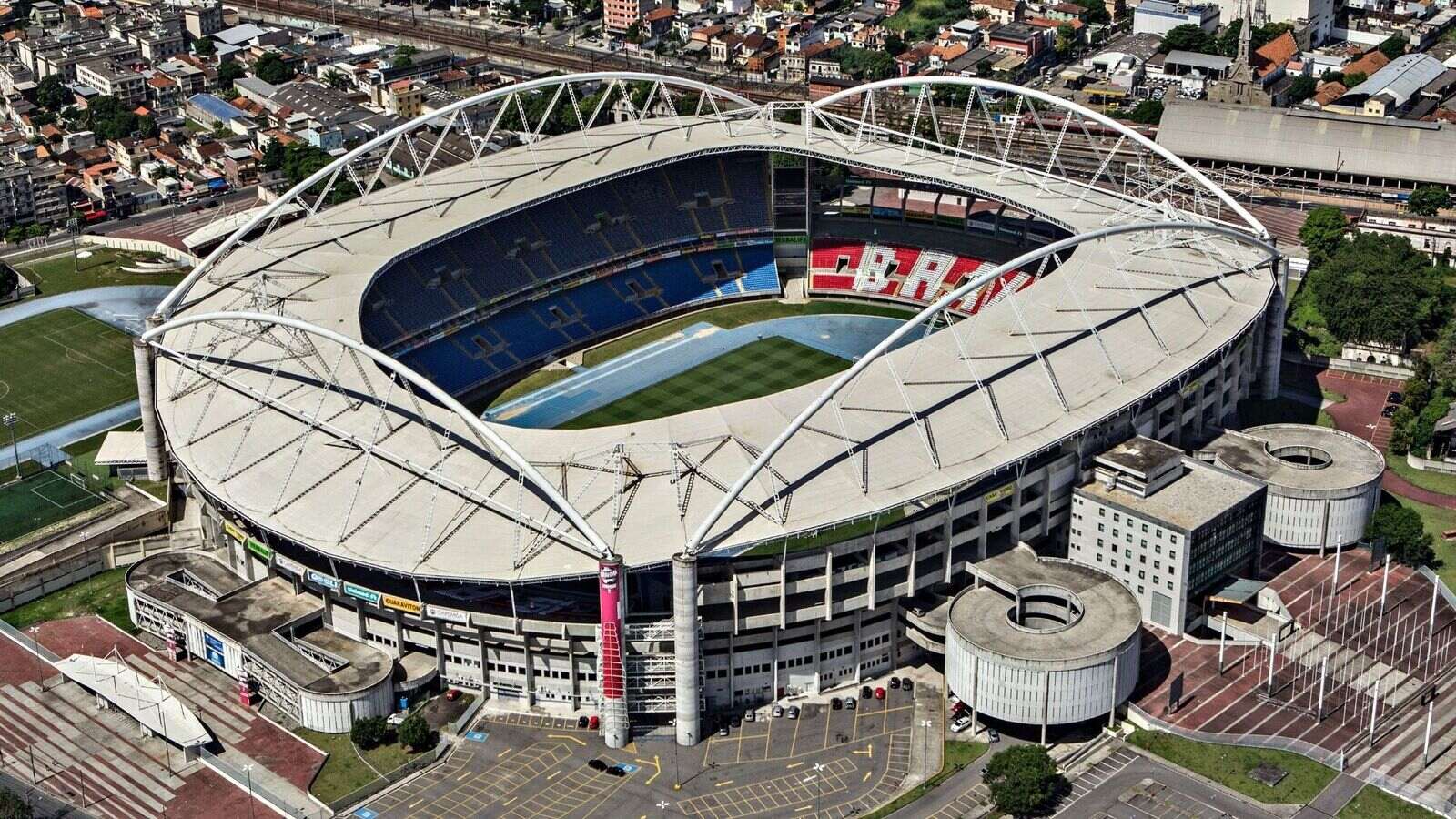
Estádio João Havelange, also known as the Engenhão, is a famous landmark in Brazil that holds a special place in the hearts of football enthusiasts. This extraordinary stadium, situated in Rio de Janeiro, has a rich history and is filled with captivating facts that make it stand out among others. From hosting major sporting events to its unique architectural design, Estádio João Havelange has become an iconic symbol of Brazil’s sporting culture. In this article, we will delve into 16 extraordinary facts about Estádio João Havelange that will leave you in awe of this magnificent landmark.
Key Takeaways:
- Estádio João Havelange, also known as the Engenhão, was built for the 2007 Pan American Games and has a seating capacity of over 46,000, hosting international football matches and major music concerts.
- The stadium offers a range of amenities for spectators and serves as a training ground for local athletes, contributing to the development and growth of sports in Brazil.
The stadium was built for the 2007 Pan American Games.
One of the most notable facts about Estádio João Havelange is that it was specifically constructed to host athletic events for the 2007 Pan American Games, a major international multi-sport event held every four years.
It was originally named after a legendary Brazilian athlete.
The stadium was initially named after João Havelange, a former Brazilian footballer and the seventh president of FIFA, known for his significant contributions to the sport.
It is nicknamed the “Engenhão”.
The Estádio João Havelange is commonly referred to as the “Engenhão” among locals, derived from its location in the Engenho de Dentro neighborhood of Rio de Janeiro.
It has a seating capacity of over 46,000.
With a massive seating capacity of over 46,000 spectators, the Estádio João Havelange can accommodate a large number of fans, creating an electric atmosphere during events.
The stadium has a distinctive circular design.
One of the most visually striking features of the Engenhão is its unique circular design, which provides excellent sightlines for spectators and enhances the overall viewing experience.
It underwent significant renovations in 2020.
In preparation for the 2016 Summer Olympics, the Estádio João Havelange underwent extensive renovations to improve its facilities and meet the international standards required for hosting Olympic events.
The stadium is primarily used for athletics competitions.
Estádio João Havelange is primarily utilized for athletics competitions, including track and field events, making it a hub for top-level athletic endeavors and the development of Brazilian sporting talent.
It has hosted international football matches.
In addition to athletics, the Engenhão has also hosted international football matches, including games during the Copa America and FIFA World Cup qualifiers, showcasing its versatility as a sporting venue.
The stadium is surrounded by lush greenery.
Situated in a green and expansive area, Estádio João Havelange offers a stunning natural backdrop, creating a picturesque setting for sporting events.
It has a state-of-the-art lighting system.
The stadium features a modern lighting system that illuminates the entire field, ensuring optimal visibility for both athletes and spectators during evening events.
The Engenhão has hosted major music concerts.
In addition to sports events, the stadium has also played host to numerous high-profile music concerts, attracting renowned national and international artists for unforgettable performances.
It is located near public transportation hubs.
Easily accessible by public transportation, Estádio João Havelange ensures convenient and hassle-free travel for fans attending events, contributing to its popularity as a premier sports venue.
The stadium offers a range of amenities for spectators.
With various amenities such as concession stands, restrooms, and comfortable seating, the Engenhão provides an enjoyable experience for spectators, enhancing their overall enjoyment of the events held here.
It has hosted major international sporting events.
Estádio João Havelange has hosted several significant international sporting events, including the 2016 Olympic Games, reinforcing its status as a world-class venue on the global stage.
The stadium has witnessed many sporting records being broken.
Throughout its history, the Engenhão has been a witness to numerous sporting records being shattered, setting new benchmarks in various athletic disciplines and captivating sports enthusiasts.
It serves as a training ground for local athletes.
The Estádio João Havelange provides a dedicated space for local athletes to train and hone their skills, contributing to the development and growth of sports in Brazil.
Conclusion
In conclusion, Estádio João Havelange, also known as Engenhão, is truly an extraordinary landmark in the world of sports. From its unique architectural design to its impressive capacity, this stadium has made a significant impact on Brazilian football history. With its rich history and memorable moments, it has become a symbol of national pride.The stadium’s innovative roof structure not only allows for excellent visibility but also showcases a commitment to sustainability with its solar panel installation. Additionally, the stadium’s multi-purpose nature allows it to host a variety of events beyond football matches.Whether you’re a sports enthusiast, a tourist visiting Rio de Janeiro, or simply a fan of remarkable landmarks, Estádio João Havelange is a must-visit destination. Experience the energy and excitement of this exceptional stadium and immerse yourself in the passion of Brazilian football.
FAQs
1. When was Estádio João Havelange constructed?
Estádio João Havelange was constructed between 2003 and 2007.
2. How many people can the stadium accommodate?
The stadium has a seating capacity of approximately 46,831, making it one of the largest stadiums in Brazil.
3. What is the significance of the stadium’s name, João Havelange?
The stadium was named after João Havelange, a former president of FIFA who played a crucial role in bringing the 2016 Olympics to Rio de Janeiro.
4. Can I take a guided tour of the stadium?
Yes, guided tours are available for visitors to explore the stadium, learn about its history, and get a behind-the-scenes look at its facilities.
5. Can Estádio João Havelange host events other than football matches?
Absolutely! The stadium is a multi-purpose venue and can host various events, including music concerts, athletics competitions, and cultural gatherings.
6. Is the stadium easily accessible?
Yes, Estádio João Havelange is well-connected by public transportation, making it easy for visitors to reach the venue.
7. Are there any iconic moments associated with the stadium?
Yes, the stadium has witnessed numerous iconic moments in Brazilian football history, including the 2007 Pan American Games and the 2016 Summer Olympics.
8. What makes the stadium’s roof structure unique?
The stadium’s roof structure is impressive as it is a cantilevered design, allowing for unobstructed views for spectators and showcasing the innovative use of materials.
Estádio João Havelange's remarkable history and unique features make it a true gem among sports venues. If you enjoyed learning about this iconic stadium, why not explore other fascinating sports-related topics? Discover the secrets of Mumbai's legendary Wankhede Stadium, where cricket dreams come alive. Marvel at the awe-inspiring Olympic Stadium, a testament to human achievement and athletic excellence. Or, take a virtual trip to the vibrant city of Rio de Janeiro, where culture, natural beauty, and sports intersect in captivating ways.
Was this page helpful?
Our commitment to delivering trustworthy and engaging content is at the heart of what we do. Each fact on our site is contributed by real users like you, bringing a wealth of diverse insights and information. To ensure the highest standards of accuracy and reliability, our dedicated editors meticulously review each submission. This process guarantees that the facts we share are not only fascinating but also credible. Trust in our commitment to quality and authenticity as you explore and learn with us.


